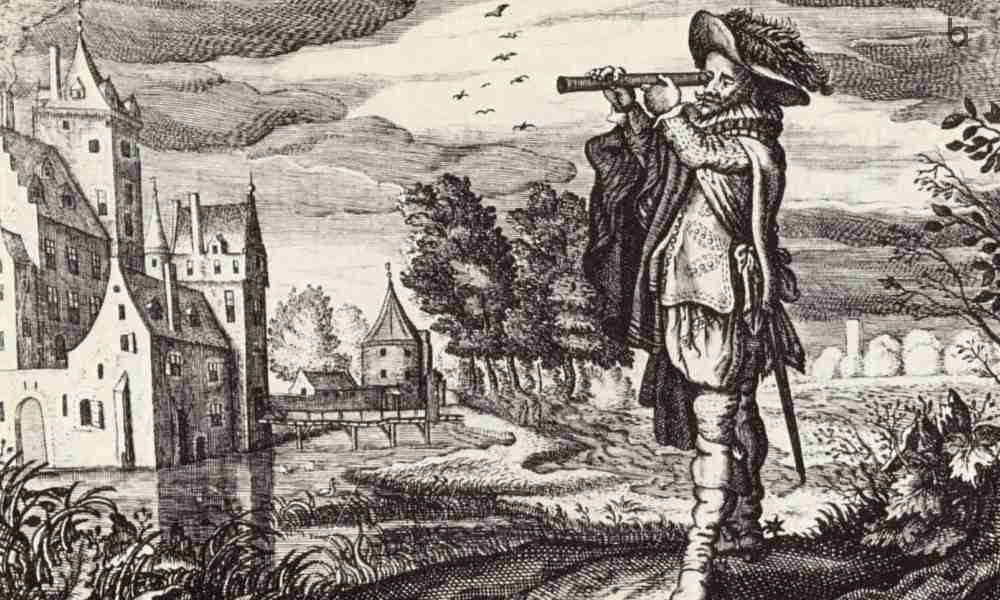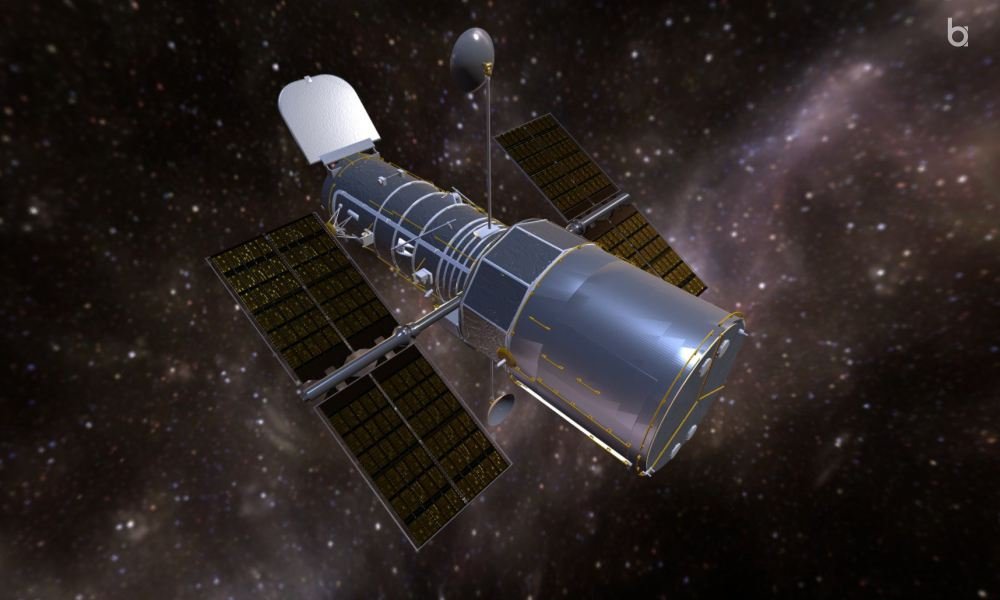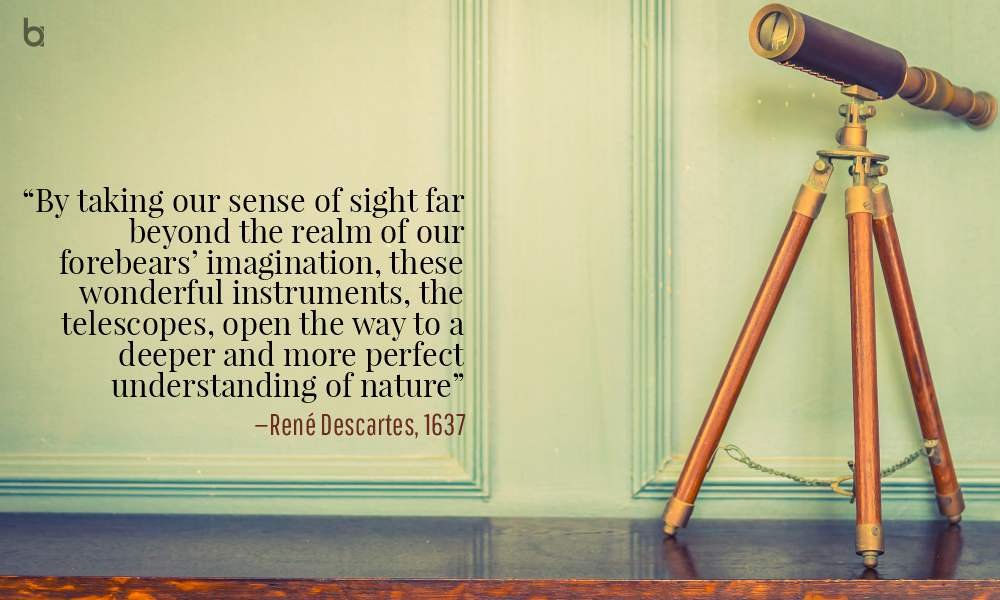Everyone is curious about the shining stars and wondrous magic in the sky. It is very exciting to experience watching distant, astronomical objects and study the charisma of nature. Earlier, science practitioners used to do research on faint objects that one could not easily see with the naked eye. The invention of telescope introduced an innovative way to observe countless stars in the sky as well as analyze land, sea, and all distant objects.
Telescope—one of the major reasons for the scientific revolution is an essential tool for scientists and astronomers. Originated from the idea of optical magnification, the telescope opened the door to the ocean of unlimited possibilities and heavenly surprises. The history of this key scientific instrument is quite interesting.
First Appearance

It is believed that the origins of telescopes lie in Greek times. Though the lenses were not introduced till the 13th century, Alhazen, an Egyptian physician heavily contributed to optics studies. Later in the early decades of the 17th century, in 1608, a Dutch lens maker filed a patent for inventing an instrument that enhanced vision and made distant objects appear closer. Based in the Netherlands, this eyeglass maker—Hans Lippershey claimed that his invention of telescopes could magnify the object three times and named it “seeing faraway things as though nearby”.
The fascinating story behind the first appearance of the telescope depicts that Lippershey got this idea by observing two children playing with the lenses in his shop. They held the lenses in such a way that the weather vane appeared closer. The patent filed by him also included a generous pension in compensation as he decided to sell the instrument to foreign kings. However, Lippershey was not the only person to file patents in the field of optics. Weeks later, Jacob Metius, a North Holland lens maker, and Zacharias Jansen, a Middelburg eyeglass maker also demanded credit for the same invention of telescopes.
The Dutch government turned down all the patents. However, it proposed Lippershey an attractive offer of developing several pairs of instruments. The original telescope was a combination of concave and convex lenses that produced an upright image; these instruments succeeded in achieving a non-inverted image that was three times larger than the original one.
Magic by Galileo
History of telescopes saw surprising events happen when the idea of “Dutch Perspective Glasses” received tremendous fame. Inspired by the classy concept, the Italian professor, Galileo Galilei created his own telescopic instrument in a short span that could magnify objects 20 times. Though he was not the pioneer of the invention of telescopes, he designed the instruments with outstanding precision and the highest quality.
Galileo worked on various versions of telescopes; the first version was a three-power instrument that consisted of a tube containing two lenses. The other one magnified the objects nine times. As mentioned in “Galileo at Work: His Scientific Biography”, Venetian Senate was impressed by his works and offered him a position as a lecturer with a handsome salary.
Galileo’s telescope had lenses that could bend or refract light. With the use of such an innovative instrument, scientists embraced the idea—“Earth and other planets are circled around the sun”. Along with the craters and mountains on the Moon, he could identify the rings of Saturn and four moons of Jupiter. This invention of telescopes also helped to find out numerous stars in our galaxy—Milky Way.
Kepler’s Model of Telescope
Several scientists from different masses tried to build telescopes with improved techniques. Johannes Kepler and Issac Newton also contributed to the invention of telescopes. Inspired by Galileo’s work, Kepler designed his own version with two convex lenses. This instrument could create the image in an upside-down manner. Kepler’s inventions can be found in his book called Dioptrice. This book is full of telescopic depictions, manuscripts, and works of art.
Kepler’s design did explain the extensive use of telescopes in larger fields with higher magnification. However, the astronomers were reluctant to practice this model. In 1630, German Jesuit mathematician, Christoph Scheiner, published his book Rosa Ursina and Kepler received recognition. Motivated by comprehensive studies, Sir Issac Newton suggested a mirror-based reflecting telescope in 1668.
Later in 1897, Yerkes Observatory in Williams Bay opened the largest refracting telescope (approximately 40 inches). Its modified version made with larger mirrors was opened at Mount Wilson Observatory in Pasadena, Calif in 1917. After the development of radio and in-depth study of waves and radiation, an American Engineer—Karl Jansky detected the first radio radiation in 1931 that gave birth to Big Bang Theory predictions. Over the years, with advancements in technology and innovative engineering concepts, scientists have created numerous telescopic models that have found magical moments in the sky.
Types of Telescope and Observatories

Since its inception, there have been numerous types of telescopes. Following is the list of some popular telescopes:
- Hubble Space Telescope: Launched in 1990, this telescope has helped in finding many major fundamental concepts that would invest considerably in space science. This includes precisely determining the age of the universe, finding more moons near Pluto, and searching for new galaxies as well as space wonders such as black holes, wormholes, and cosmos. There have been five servicing missions with the help of the Hubble by the Shuttle Crew.
- James Web Telescope: Speaking about the strongest and most precise telescopes, James Web tops the list. It is the successor of the Hubble telescope. NASA launched it on Dec 25, 2021, from ESA’s launch site at Kourou in French Guiana. This 10 Billion USD instrument is designed to uncover the history of the cosmos and the propositions from the Big Bang Theory. The study also includes studying how the first galaxies were formed, how stars and planets were formed, and exoplanets.
- Kepler Telescope: This instrument is well-known for finding more than 4000 potential planets after its first launch in 2009. It is a dedicated observatory to find planets outside our solar system, especially the celestial bodies resembling the Earth. As per the statistical data, Kepler has discovered 2,392 exoplanets with 2,368 planets awaiting confirmation.
For many centuries, various scientists and researchers have been contributing to the invention of telescopes. With their help, mankind has discovered millions of space wonders and threats of other celestial bodies. They not only have changed our perspectives about the world and space but also opened a gateway to numerous advanced instruments.

ALSO READ: Apple to begin assembling its devices in India; will it lower iPhone prices?



